
Hawaiian Islands Tour
January 24 to February 5, 2020
P. Michael Henderson
I'm going to leave the map at the beginning of each page so you know where we are.

++++++++++++++++++++++++++++++++++++++++++++++++++++++++
1/30/2020 (Thursday) Today we're going south, toward Kona, to visit an old coffee farm and taste Kona coffee.
We woke up to a nice sunrise view of the 9th fairway on the North Course.
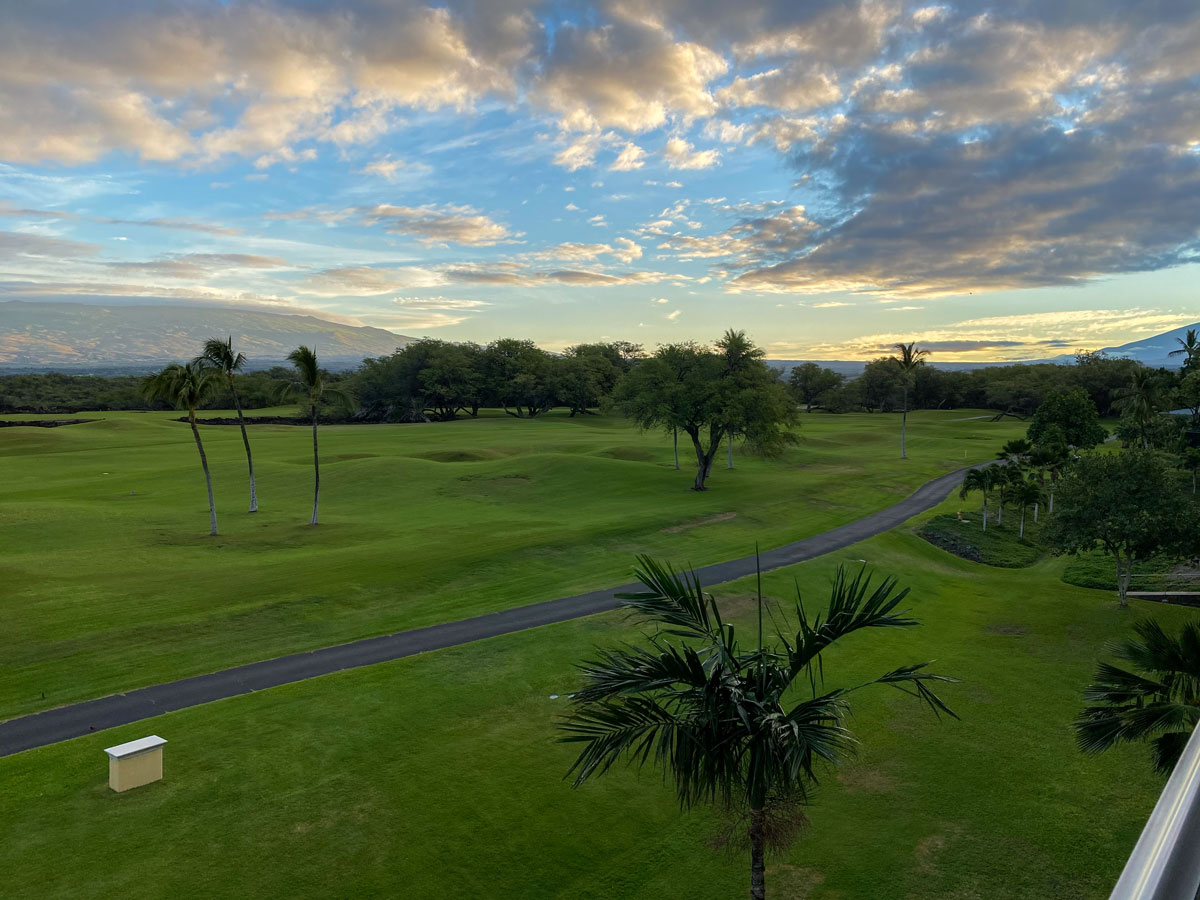
After breakfast we met the group at the bus at 7:45. Here's the route we'll drive.
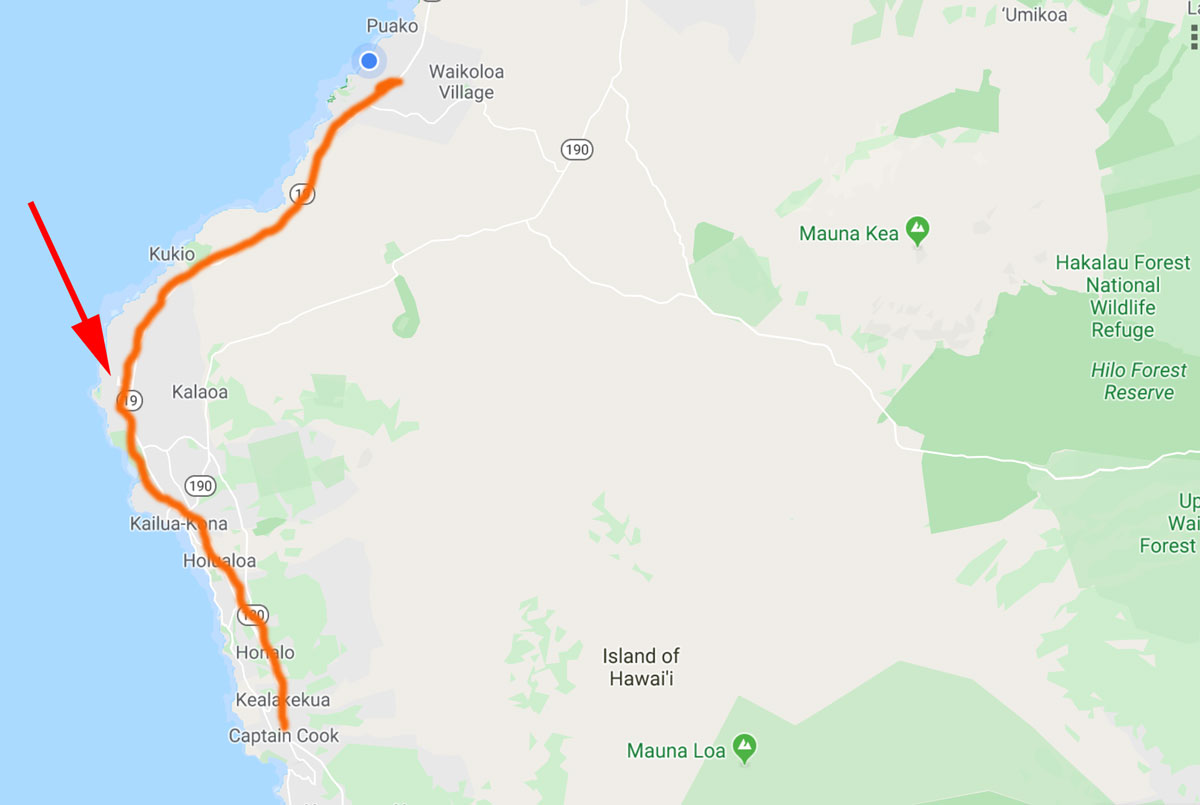
As you proceed down the "Kona Coast", between the hotel and the airport (about where the red arrow points) you get to see how dry this area is. The lava from long ago eruptions is still "pristine", and there's lots of it. Tauck used to fly their groups into the Kona airport for the beginning of the tour, but the barrenness of the landscape between the airport and the hotel was off-putting to the guests, who were expecting a much different sight. So they now fly into Hilo, where the landscape is lush and tropical.
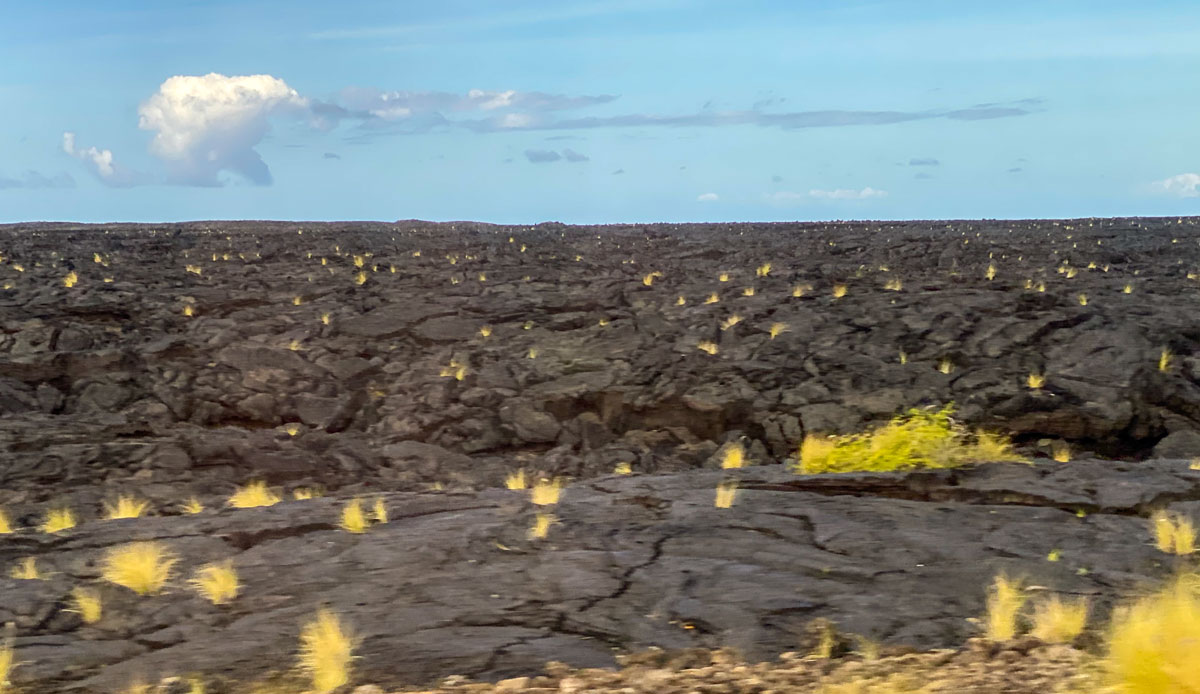
Here's another view. Both pictures were taken from the bus, out the window, so the quality is not the best. The lava just goes on and on. If this area received rain, the rain and the plants that would establish themselves would have broken down the lava to a rich soil.

Once you get past the airport the area starts to get more rain and the landscape becomes more lush. By the time we got to our destination, the landscape was almost as lush as in Hilo.
Our destination was the Kona Coffee Living History Farm.
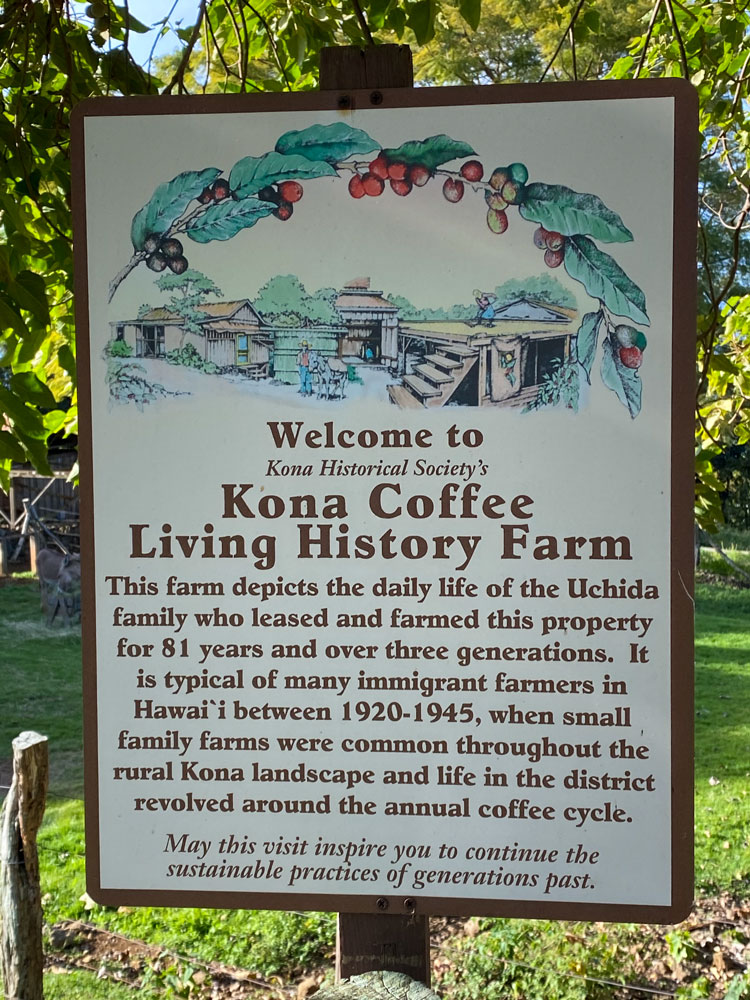
Here's an aerial view of the farm. The red arrow points to the gift shop. The yellow arrow points to the building where the coffee was processed. And the blue arrow points to the family home. Photo from Google Earth.
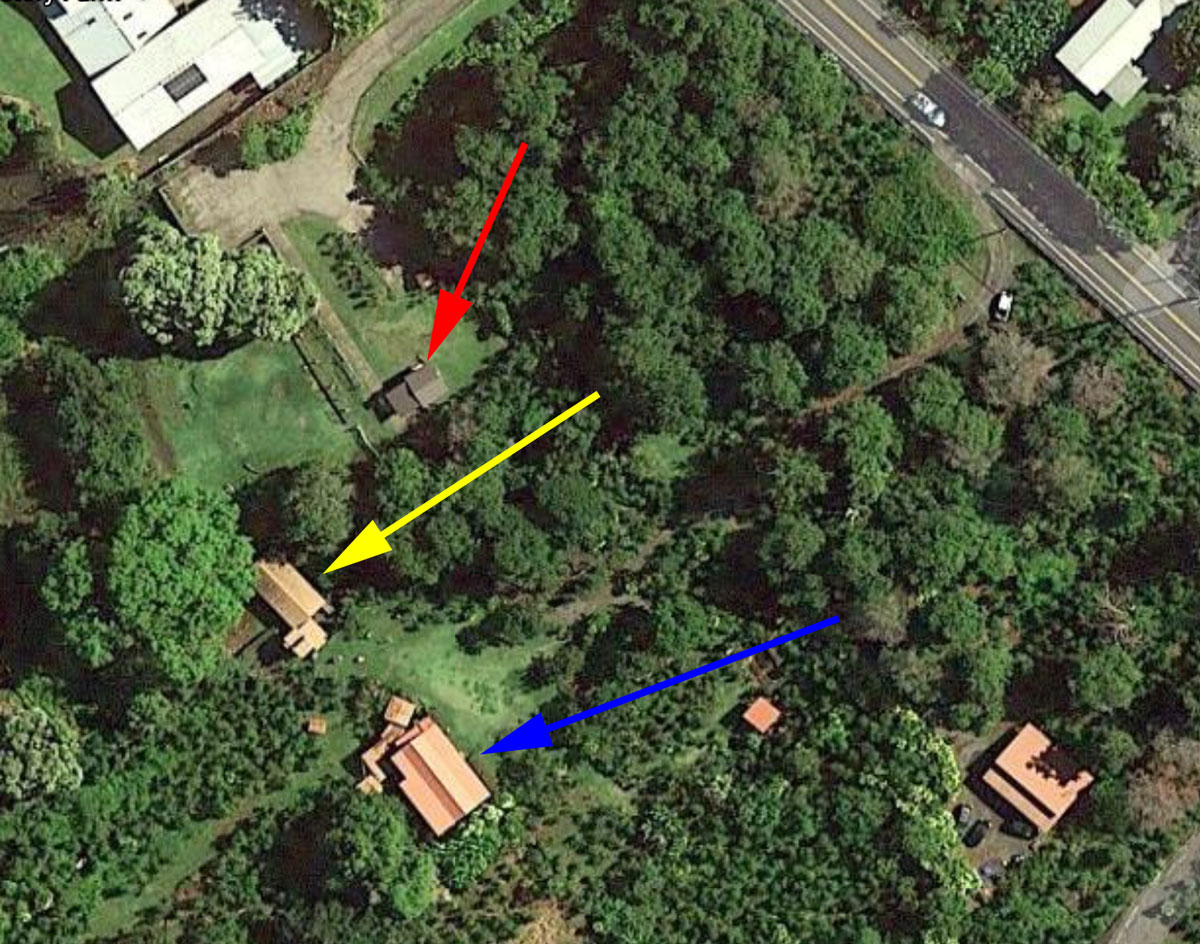
The gift shop, where we entered the farm.

Barry, one of the docents. I thought he looked like a Hawaiian "Juan Valdez" (from a long-ago coffee commercial). He's giving the "hang loose" sign to us.
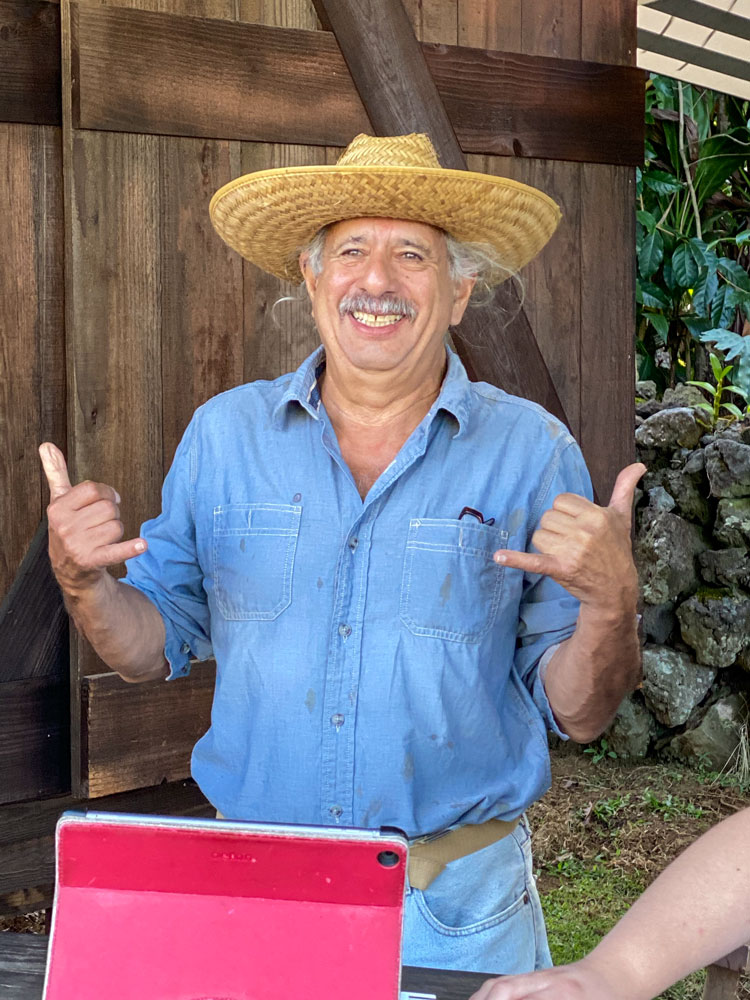
The family home. I'll talk more about it later.
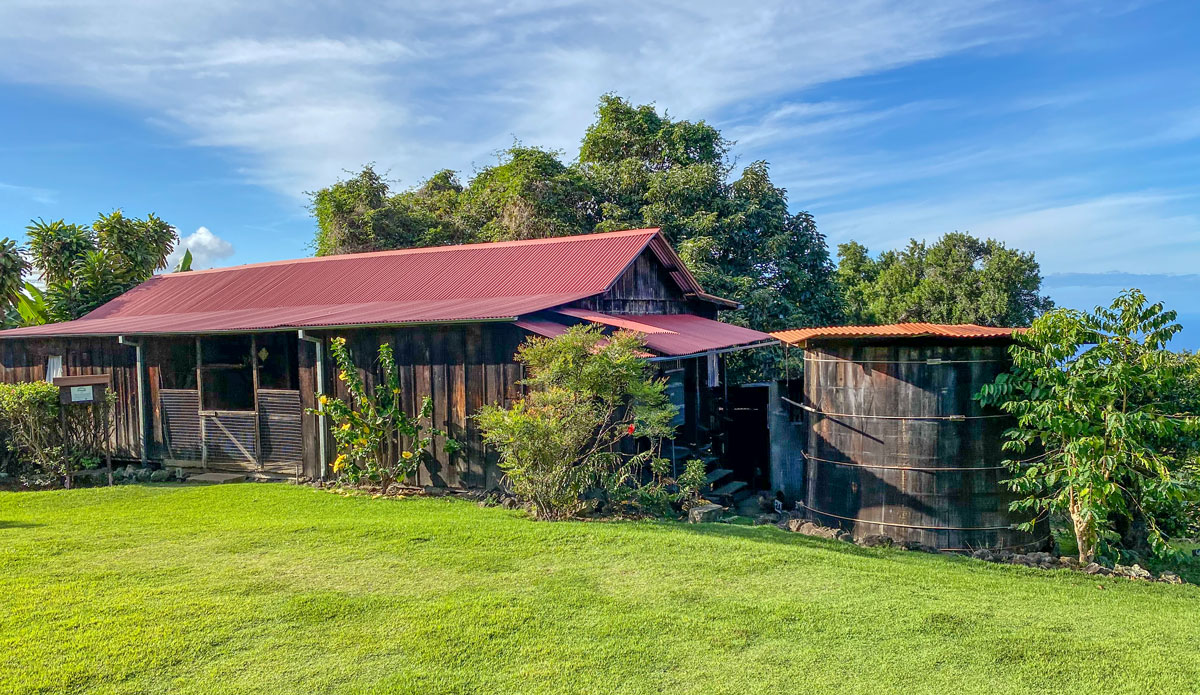
And the coffee drying and processing shed.
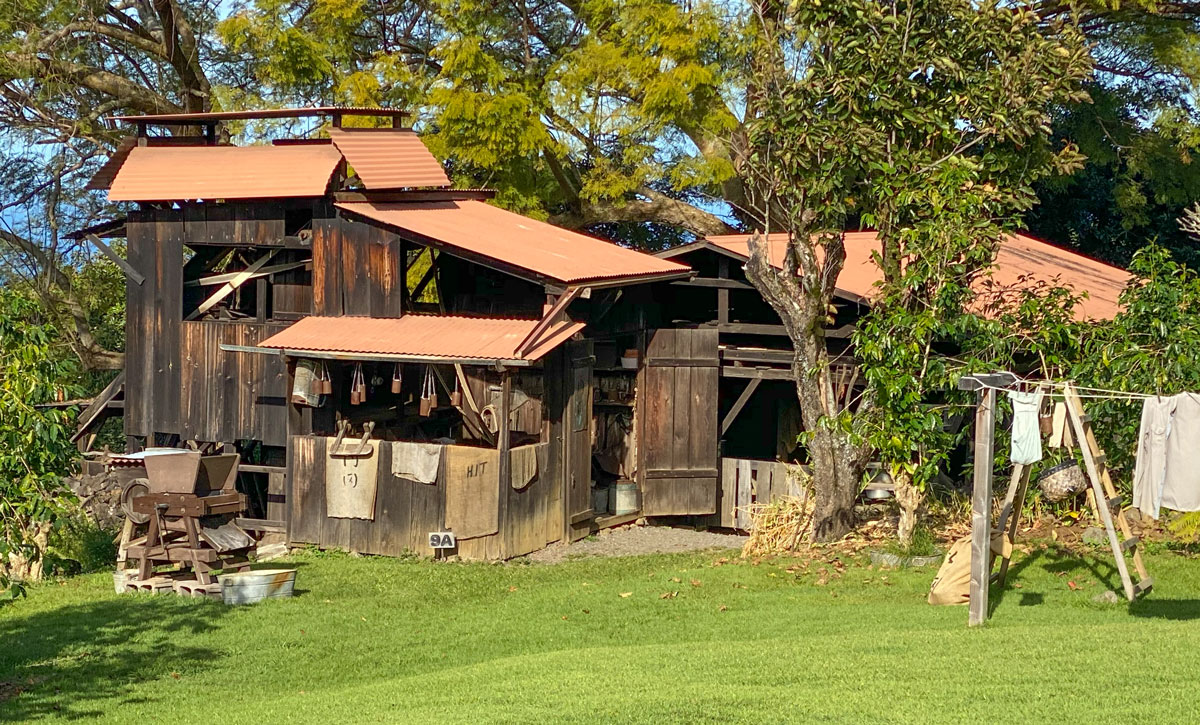
There were three stations: the growing of the coffee beans, the drying and processing of the beans, and the family home. This docent gave us information on the process of growing and harvesting the crop.
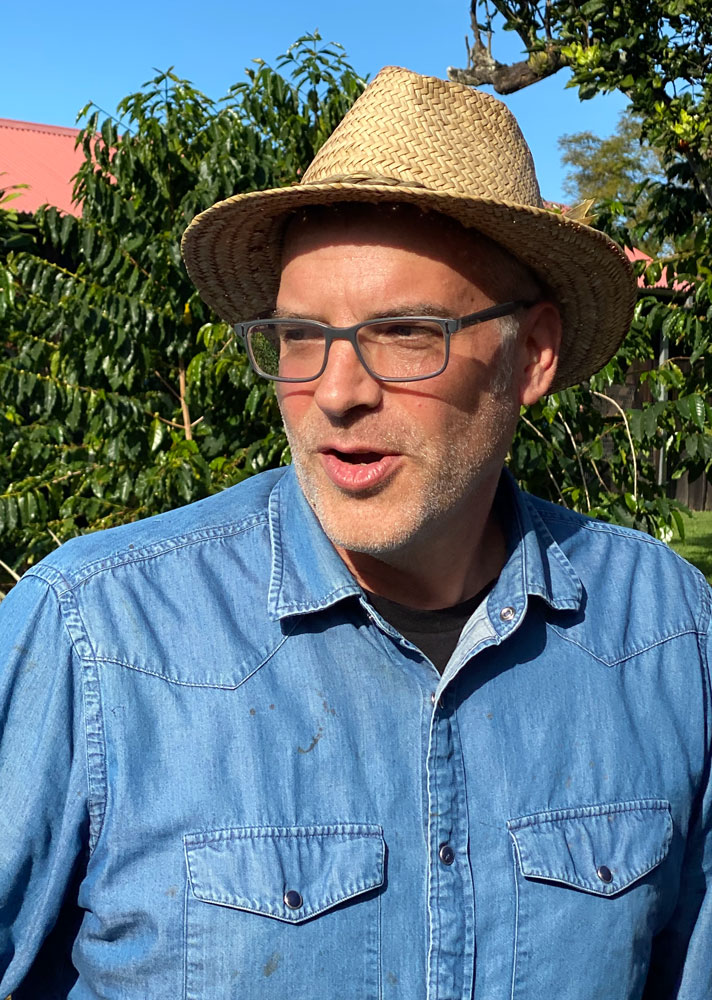
The coffee trees are cut back hard each year, leaving not much more than a stump. The docent explained that cutting back was not the way to get the most beans, but a way to make picking the beans easier. Here's one of the trees that has just started sprouting out.
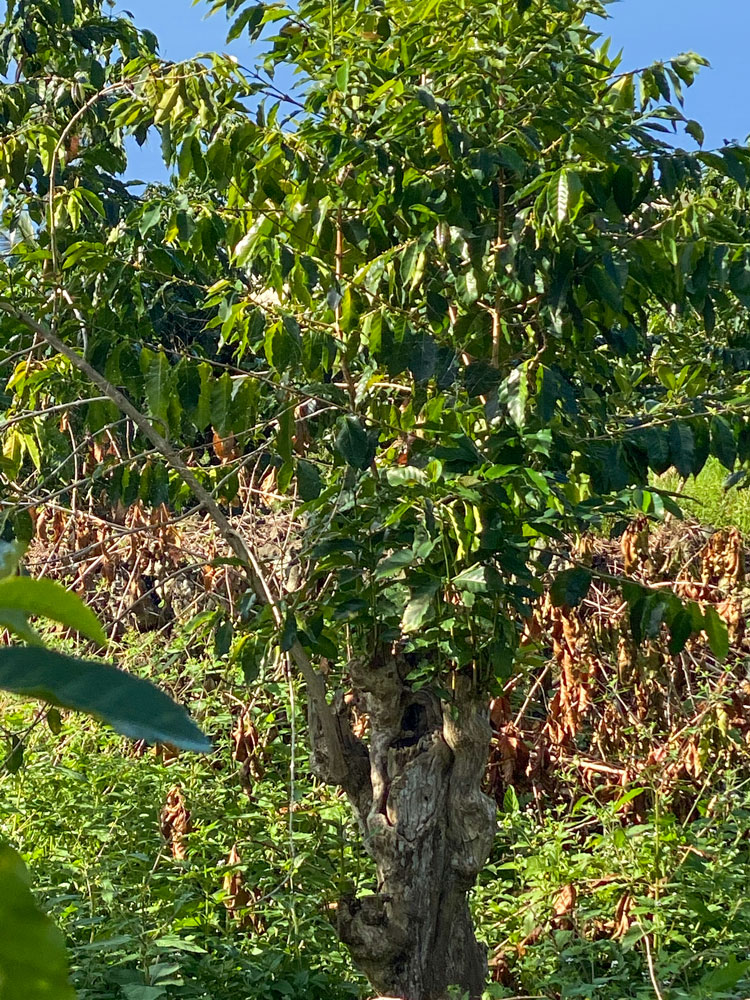
Here's a coffee tree flower.
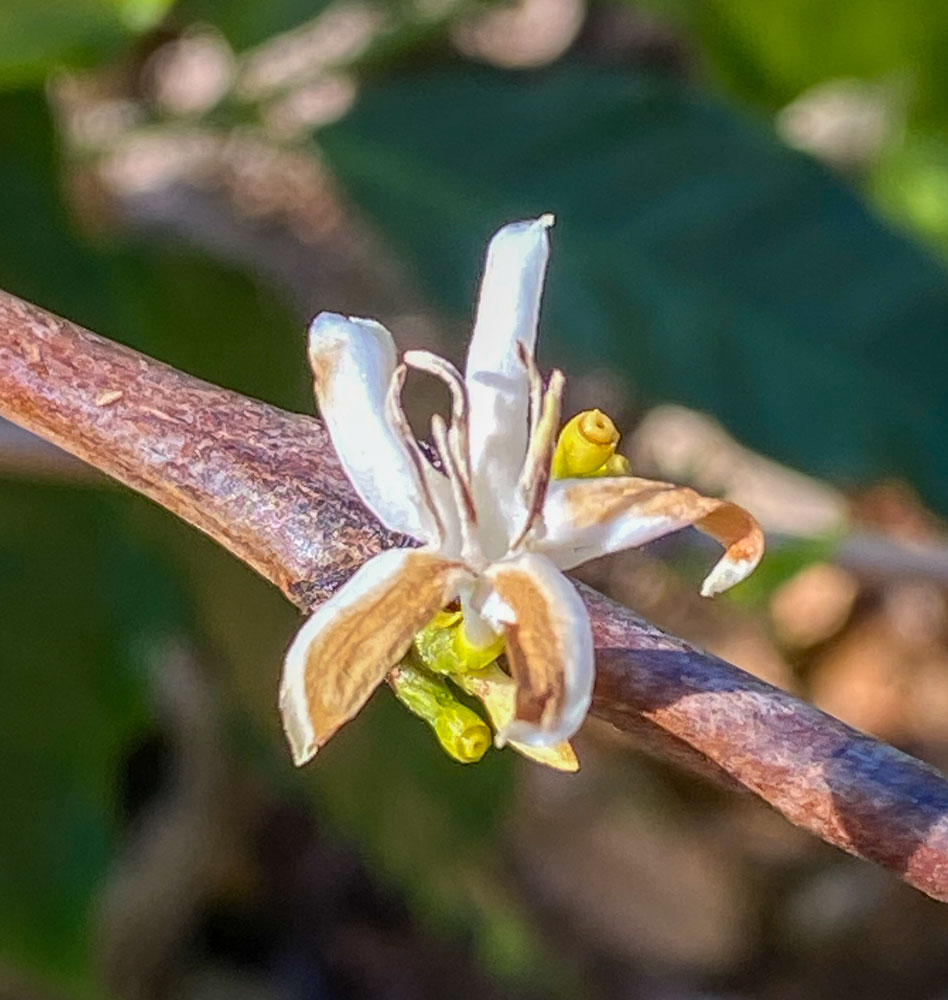
And a couple of very young coffee beans.
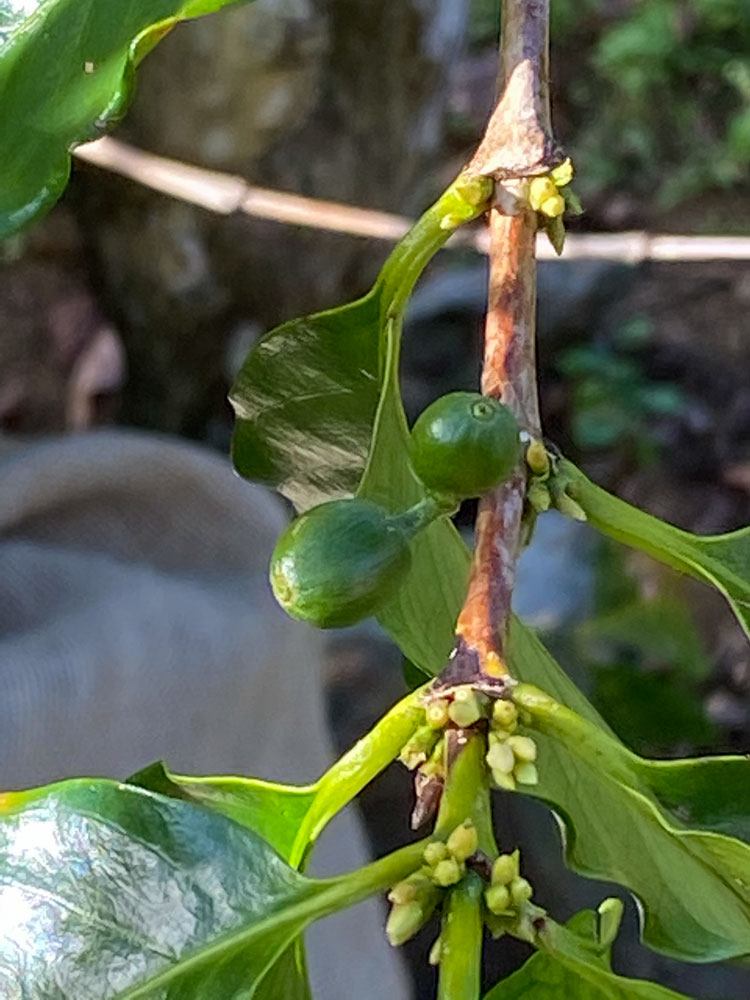
Next, we went to the station where the drying and processing of the beans was done. Barry is giving us a detailed description.

He explained how the coffee "berries" were processed to separate the beans from the hulls. About 40% of the weight of the picked berries is lost in this process.
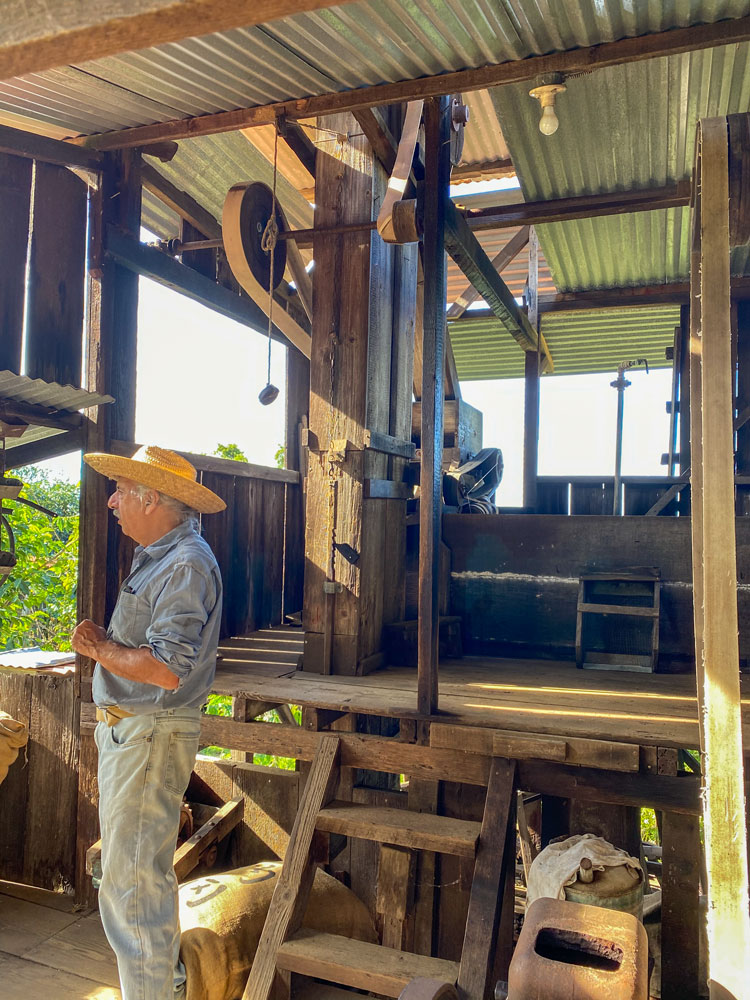
The beans are picked and then dried. The outer skin is removed by hand, by women working indoors.

The last station was to see the family home. The farmers were Japanese and their house reflects their background. While this docent was not related to the family that leased the farm, she had known them.
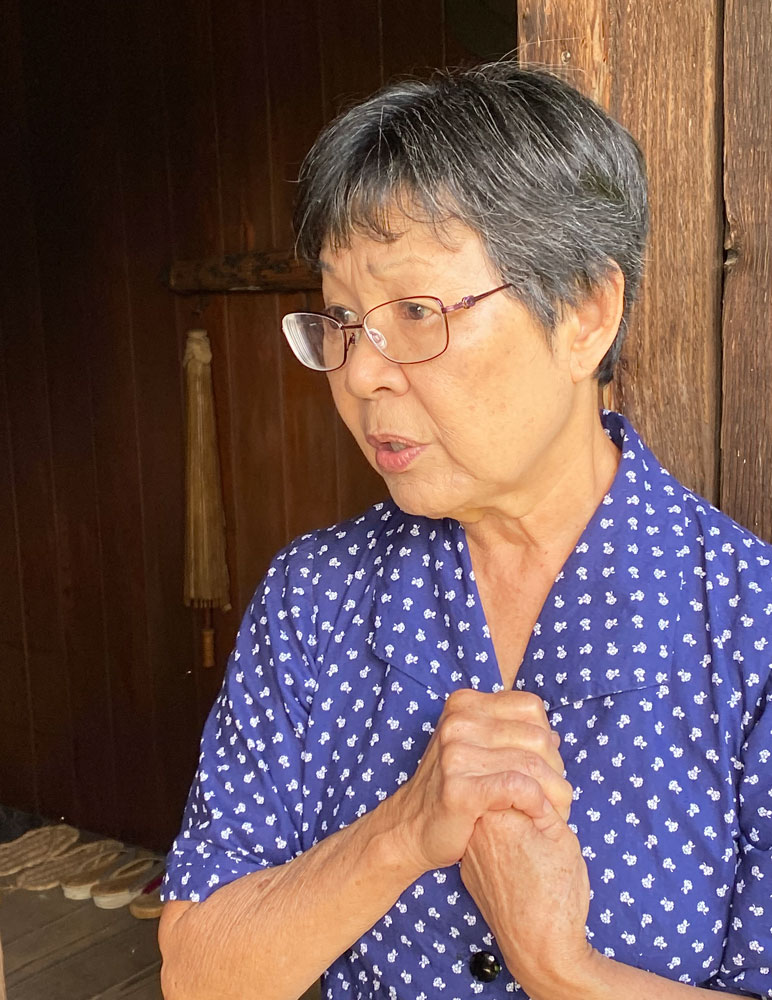
A few views of the home. The sink area of the kitchen. Note the single faucet. Water came from the cistern outside where rain water was collected. There's a cloth bag (an old Bull Durham tobacco bag) tied to the faucet to filter dust and sediment from the water. She gave detailed descriptions of how nothing was wasted, but was carefully saved and re-purposed.

The stove area. They burned coffee wood, of which they had plenty, but note that there's no vent for the stove area. When they used the stove, the smoke went into the house. However, because of the mild weather they were able to leave the house open all year long and the trade winds blew the smoke out of the house. The round wooden lid covered the rice pot, which was the first thing to be put on the stove after the morning fire was burning.
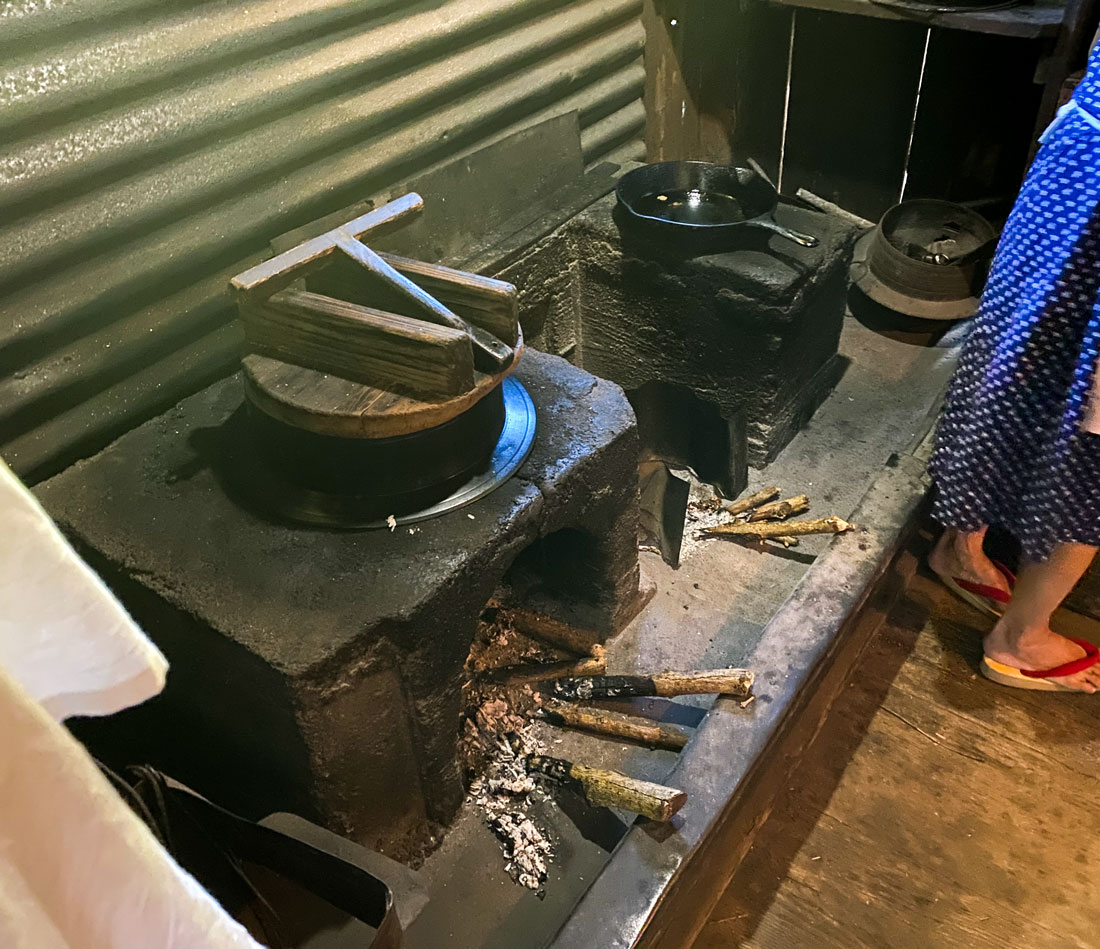
A look into the bedroom, which is just off the kitchen. Note the futons on the floor. The floor is not tatami but a thin woven mat.
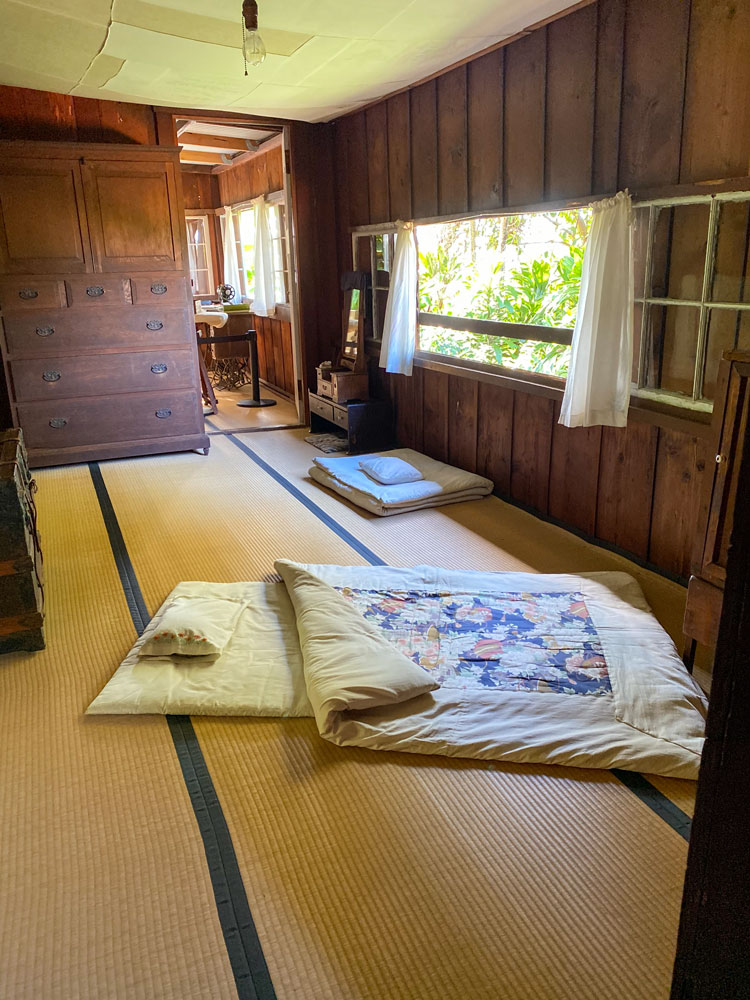
The living room was also used for sleeping.
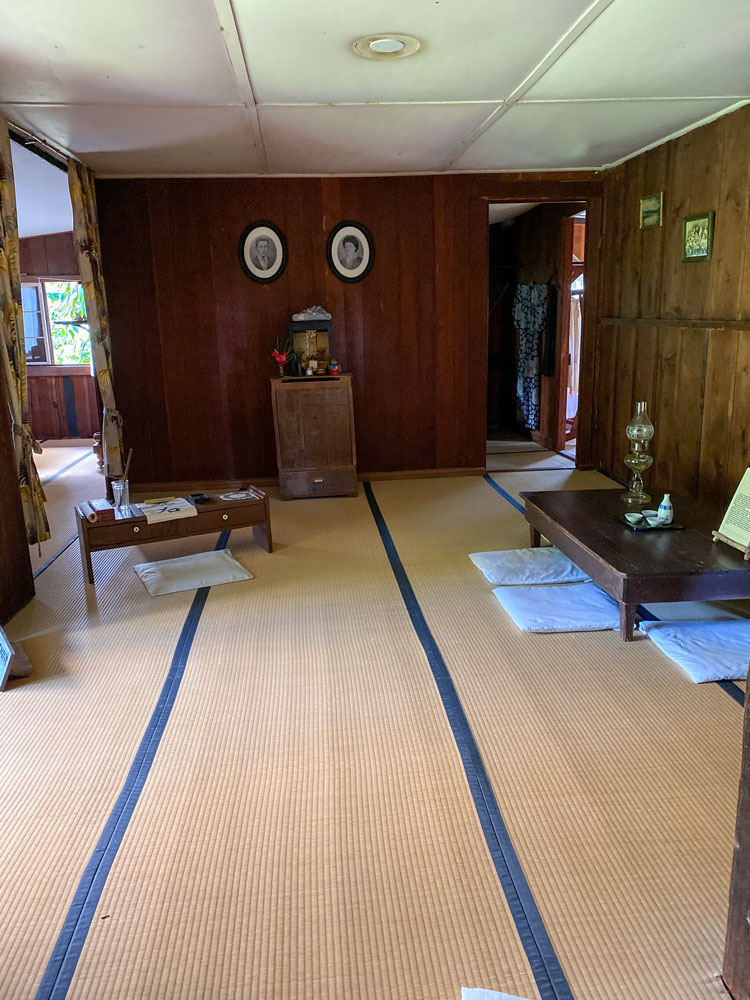
When we left the coffee plantation we headed to St. Benedict's Catholic Church, commonly known as the "Painted Church".
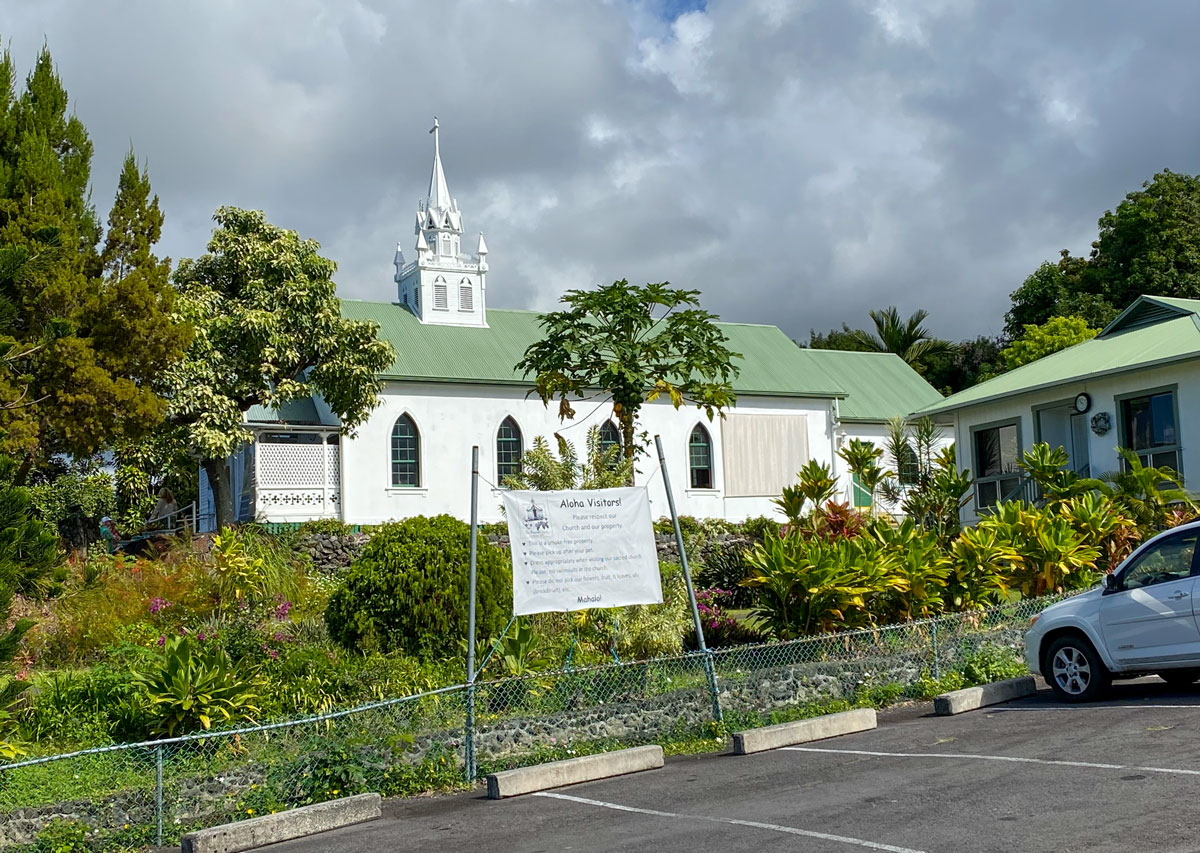
A view of the interior.

One of the parishioners gave us a talk about the church, but I was unable to hear a lot of what she said.
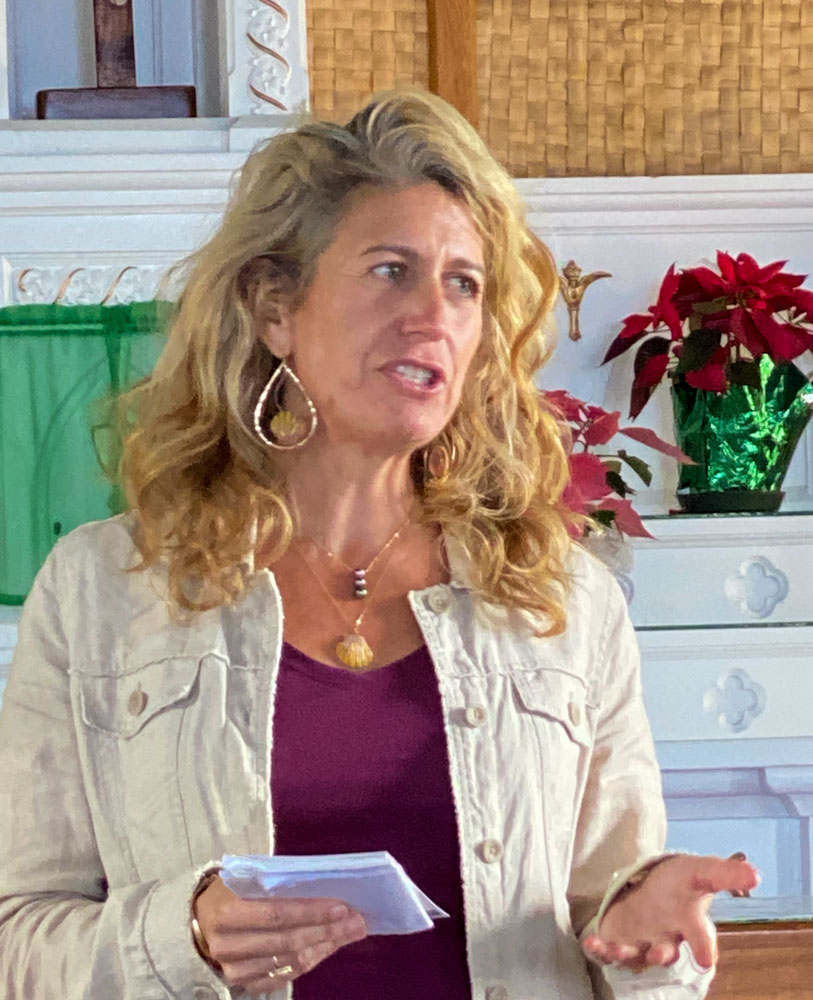
Back at the hotel Judy and I enjoyed a great filet mignon at Brown's Restaurant.
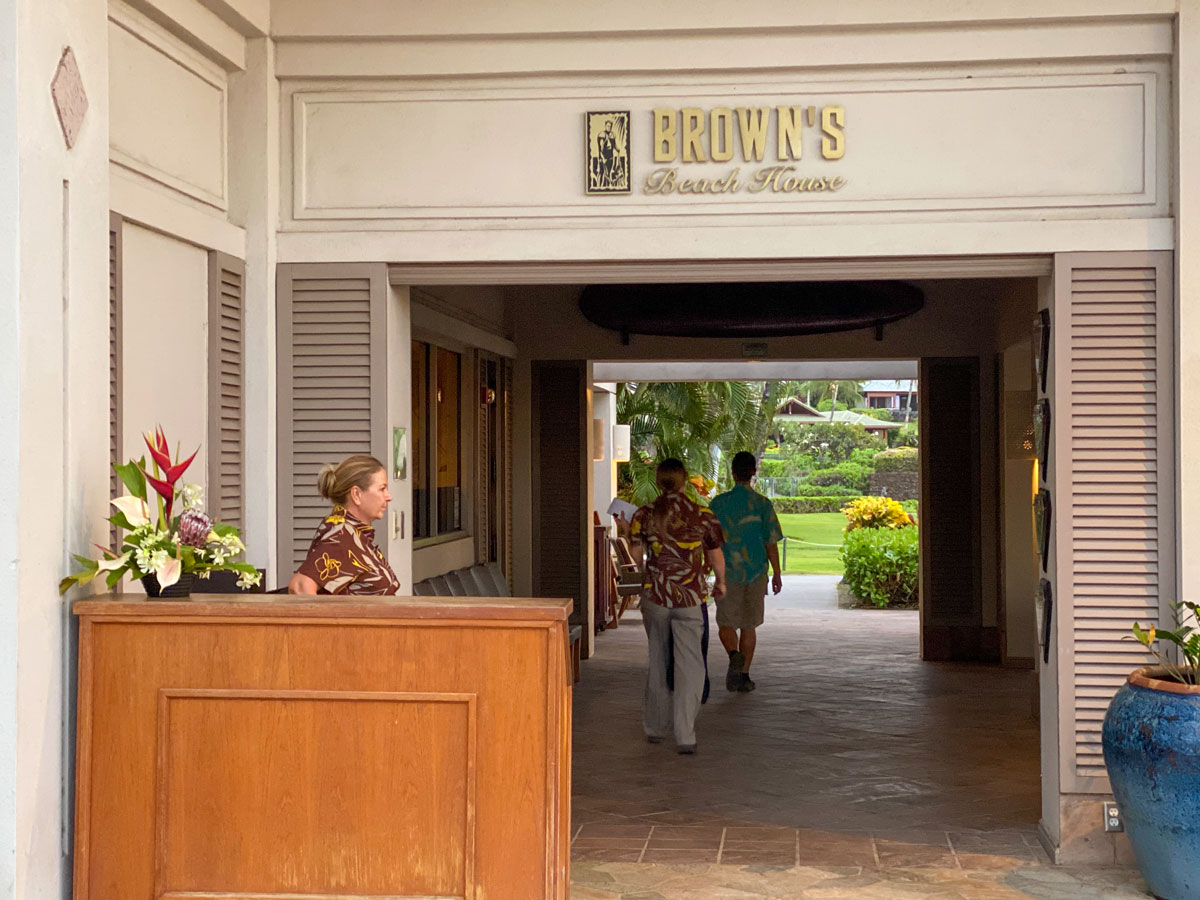
Watching the sun go down over the ocean was the perfect dessert.
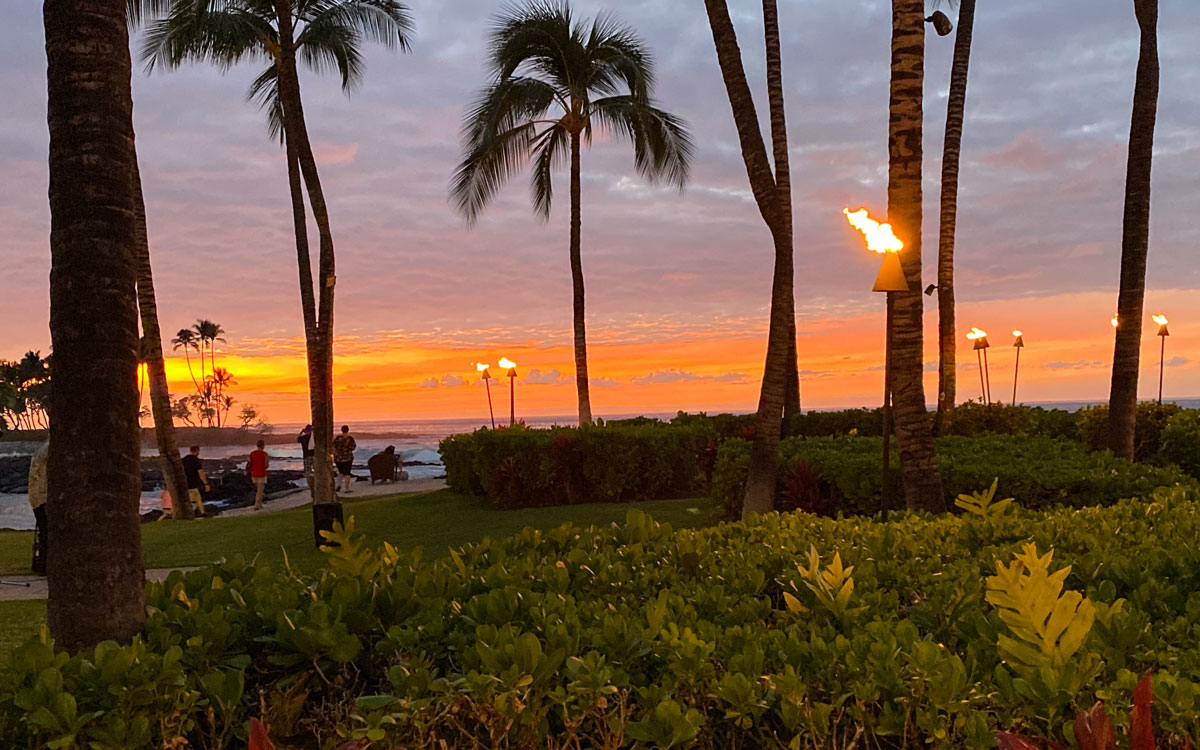
Then we headed back to the room and to bed. We have an early day for our trip to Kauai - bag pull at 7am and depart for the airport at 8.
Our adventure continues here.